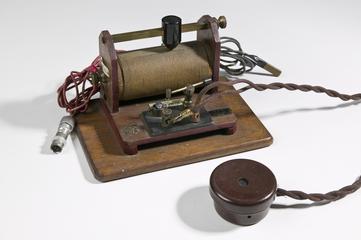
Ekco 'Mains Drive' 3-valve battery eliminator for AC mains, 1929
- maker:
- E K Cole Limited

Ekco 'Mains Drive' 3-valve battery eliminator for AC mains, 1929
In 1926, the Electricity Act (1926) created a central authority to promote a national transmission system for mains electricity in the UK, which was largely completed by the mid-1930s. In the late 1920s and early 1930s, domestic electrical devices – largely radio receivers – began to switch from battery powered to mains AC electricity. However, domestic radio equipment required different components including radio valves for the switch from battery to mains electricity.
Battery eliminators, such as the EKCO example, became popular in the late 1920s and early 1930s as they were essentially an adapter so the battery-powered electrical equipment especially radios could be plugged into other electrical sources including mains electricity without replacing components. EKCO were the leading manufacturers of mains eliminators and battery chargers for radio sets
The EKCO company was a British electronics company from 1924 to 1960 and was named after its founder Eric Kirkham Cole. They first made radio receivers and later expanded into television receivers and other electronic goods. In 1960, EKCO merged with Pye to form a new company, British Electronic Industries Ltd.




